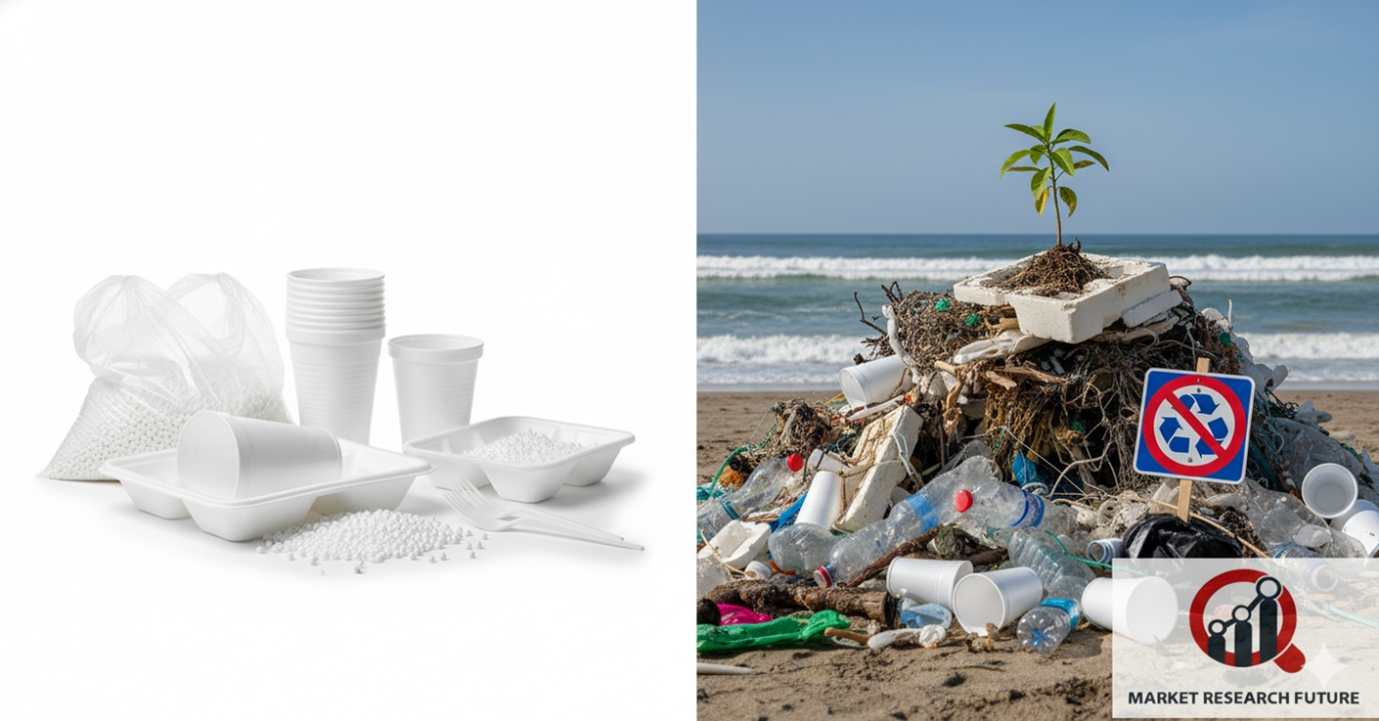About Polystyrene And Its Market

Polystyrene Market Overview
Polystyrene is one of the most ubiquitous plastics due to its light weight, versatility, and low cost. Nevertheless, due to cost and environmental effects, the future of Polystyrene is becoming more and more scrutinized, and it’s heavily regulated. In this paper, I will cover the current state of the Polystyrene market, the most influential factors on its primary market, and future projections for Polystyrene.
Understanding Polystyrene and Its Applications
Polystyrene is produced from the polymerization of styrene, which is a liquid hydrocarbon, managed as a by-product from petroleum or natural gas. In normal conditions, it is characterized as a rigid thermoplastic, which will soften when heated, and will solidify when cooled; thus, it can be molded and extruded during heating.
Polystyrene’s thermoplastic properties make it easy to manufacture, while the following attributes make it widely used:
Polystyrene is:
- Impact-resistant, and can be manufactured to withstand high-impact polystyrene grades
- Athermal insulation
- Stable thermally
- Clear, optically to a certain degree
- Inexpensive
Due to the properties listed, polystyrene is used as building insulation of expanded polystyrene (EPS) and extruded polystyrene (XPS), as well as in rigid and foamed packaging cups and trays, in medical devices, and in the manufacture of consumer electronics and hinges.
Polystyrene is brittle and has poor resistance to chemicals, especially organic solvents. It degrades when exposed to UV radiation, is flammable and is environmentally persistent. Recycling of polystyrene also presents challenges.
Evolving Applications and Market Drivers
Polystyrene's versatility and unique properties have permitted its use in several industries; it has high impact strength, excellent heat insulation, and is easily shaped. In construction, Expanded Polystyrene (EPS) and Extruded Polystyrene (XPS) foam forms are important as they provide insulation that reduces heating and cooling costs of structures. Polystyrene also has a role in the automotive industry, in the packaging of food, and in the electronics industry, as high-impact polystyrene (HIPS) and general-purpose polystyrene (GPPS) are used in casings. Polystyrene has consistent performance, low production costs, and versatility, resulting in continued demand even when global focus shifts toward less plastic use.
Sustainability and Recycling Initiatives
Environmental concerns are changing the narrative around polystyrene, particularly its impact on plastic waste and pollution. Industry leaders are now focusing on more sustainable practices, such as investing in advanced recycling techniques, including chemical depolymerization. This technique breaks down polystyrene waste into monomers, allowing it to be reused. Major companies such as INEOS Styrolution, Trinseo, and TotalEnergies are launching large-scale projects to incorporate recycled polystyrene into their packaging and consumer products. This shift to more integrated recycling practices is in response to increased consumer mindfulness, regulatory mandates, and anticipated economic developments in sustainable polystyrene alternatives.
Regional Dynamics and Market Leaders
The Asia-Pacific region is and will be the largest region in the world for polystyrene, globally accounting for more than 50% of total demand and production capacity for polystyrene. China, India, and to a lesser extent, South Korea and Japan have been the leaders for the region on polystyrene demand, due to rapid industrial expansion, urban infrastructure build-out, and demand from the electronics sector. North America and, more so, Europe are, from a polystyrene demand and consumption perspective, more subdued and strategically conservative as a function of environmental sustainability demand and rising recycling targets. However, this region is and will be the focus of innovation for new sustainable alternatives to polystyrene.
Challenges and Future Opportunities
Polystyrene is versatile but certainly not without its challenges. There are issues with its brittleness and its burning, and UV degradation. There are also issues with its petroleum-based raw materials when market prices fluctuate. There are also issues with growing laws around single-use plastics. However, there are growing opportunities with the recyclable and bio-based raw materials. The introduction of bio-polystyrene with renewable feedstocks and mass balance certified recycled content is a significant step in reaching greater sustainability.
The Road Ahead
With the growing cross-border economy focused on sustainability, the polystyrene industry is no different. Once a pollutant, the industry has the potential to crossover to positive use within the circular economy. The introduction of digital monitoring and greener methodologies within the industry is a positive step towards further advancement. The polystyrene market is expected to be positioned within a more performance-oriented paradigm. The market is to see a balanced focus between a sustainable environmental and industrial focus. The target year is within the year of this writing. Advanced methodologies, greener technologies, and digital monitoring ensure the market meets the target.

Leave a Comment